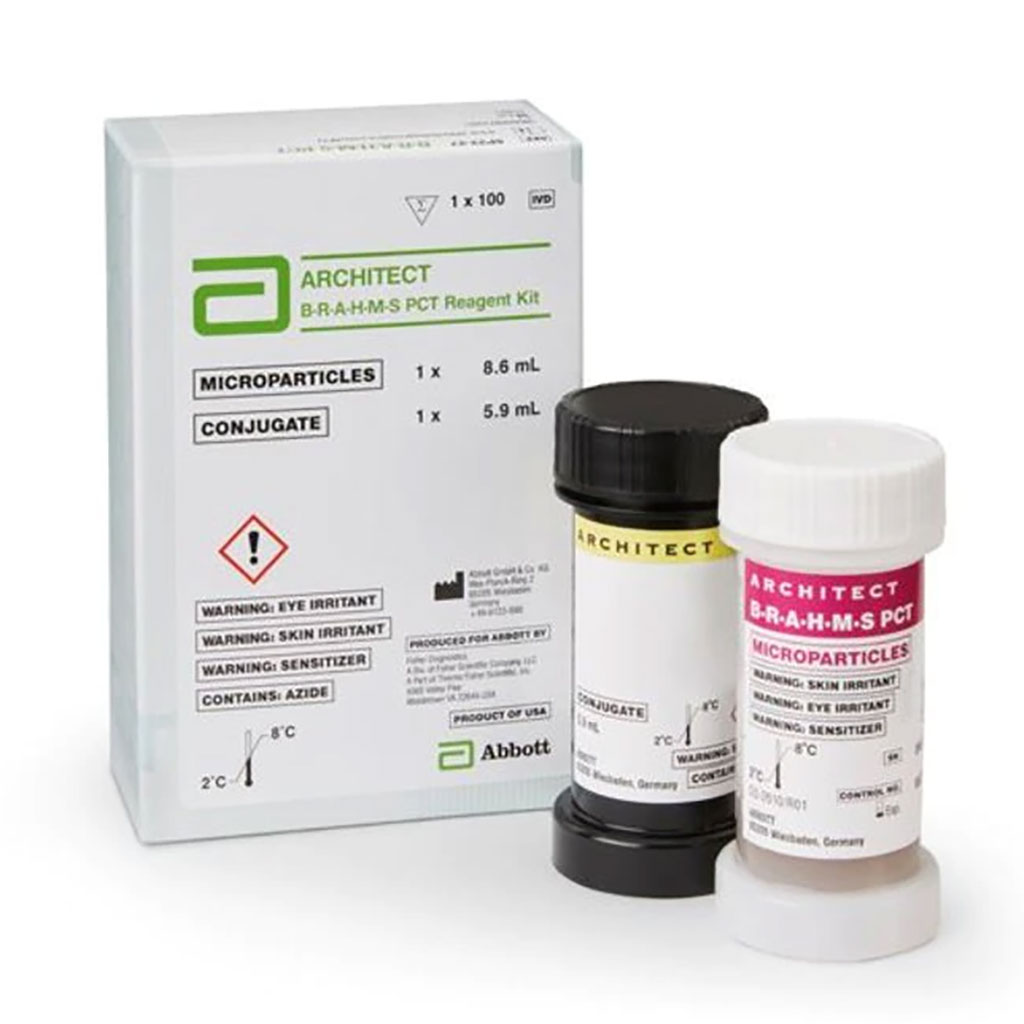Novel Automated Procalcitonin Immunoassay Compared with Four Different Assays
Posted on 05 May 2022
Procalcitonin (PCT) is an important biomarker of sepsis and respiratory infections. An increase in PCT expression in parenchymal tissue can typically be observed in severe bacterial, but not or significantly less, respectively, in viral infections; thus, measurement of plasma PCT concentrations is an important diagnostic tool for clinicians to distinguish between infections from a bacterial versus viral origin.
In addition, plasma PCT measurements are frequently used for antibiotic therapy monitoring which leads to a more efficient use of antibiotic drugs; this, in turn, has beneficial economic effects and reduces the generation of multi-resistant pathogens. Various automated immunoassays for measuring PCT in patient plasma are available in medical laboratories. However, due to a lack of international reference material for PCT, the assays are not always comparable.

Clinical Chemists at the University Medical Center Göttingen (Göttingen, Germany) randomly collected 120 plasma samples from clinical routine laboratory analysis. Parallel PCT measurements of all samples were carried out using five different automated assays on a total of six analyzers: ARCHITECT BRAHMS PCT on the Architect i2000SR (Abbott Diagnostics, Lake Forest, IL, USA), a two-step chemiluminescence microparticle immunoassay (CMIA) using acridinium-labeled conjugates; Abbott Diagnostics’ ALINITY i BRAHMS PCT on the Alinity i, also a CMIA.
DIASYS PCT FS (DiaSys Diagnostic Systems, Holzheim, Germany), a particle-enhanced turbidimetric immunoassay (PETIA) on the Abbott Diagnostics’ Architect c16000 and Alinity c; Elecsys BRAHMS PCT on the Cobas e411 (Roche Diagnostics, Mannheim, Germany), an electro-chemiluminescence immunoassay (ECLIA) in association with a ruthenium complex-conjugated antibody; LIAISON BRAHMS PCT II GEN on the Liaison XL (DiaSorin, Saluggia, Italy), a sandwich chemiluminescence immunoassay using an isoluminol antibody conjugate.
The investigators reported that the DiaSys assay showed clear differences as compared to the BRAHMS-associated assays when measured on Architect c: i.e. 58% positive mean bias versus Architect i, 67% versus Cobas and 23% versus Liaison. As a result, additional 19% the patients would have a suspected bacterial infection, when using PCT values from the DiaSys assay and commonly accepted decision limits. A crosscheck of the DiaSys calibrator on the BRAHMS-associated systems showed a low recovery of the calibrator material (approximately 50%).
The authors concluded overall, their study showed significant differences between the DiaSys and BRAHMS-associated assays. This could be attributed to a potential DiaSys calibrator problem. This highlights the need for an international reference material for harmonization of the PCT assays. The study was published on April 15,2022 in the journal Practical Laboratory Medicine.
Related Links:
University Medical Center Göttingen
Abbott Diagnostics
DiaSys Diagnostic Systems
Roche Diagnostics
DiaSorin




 assay.jpg)









